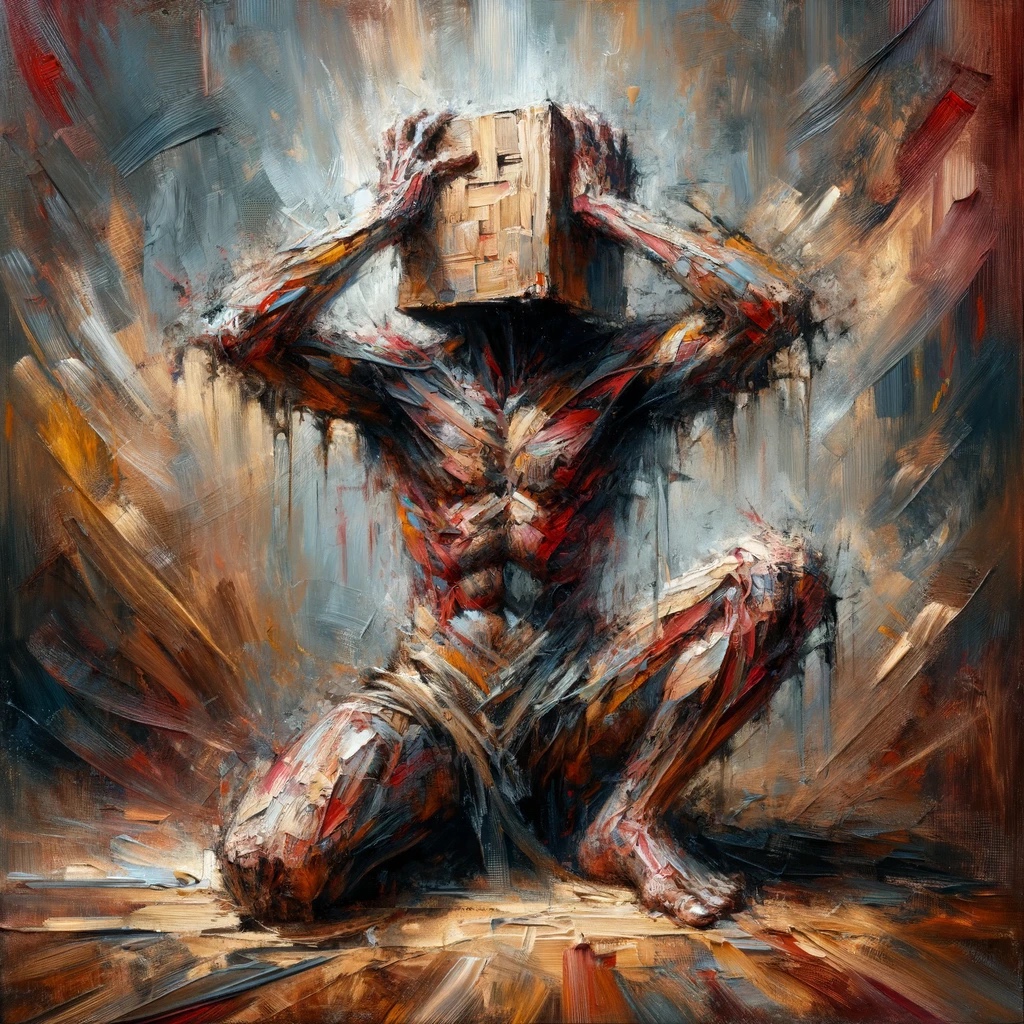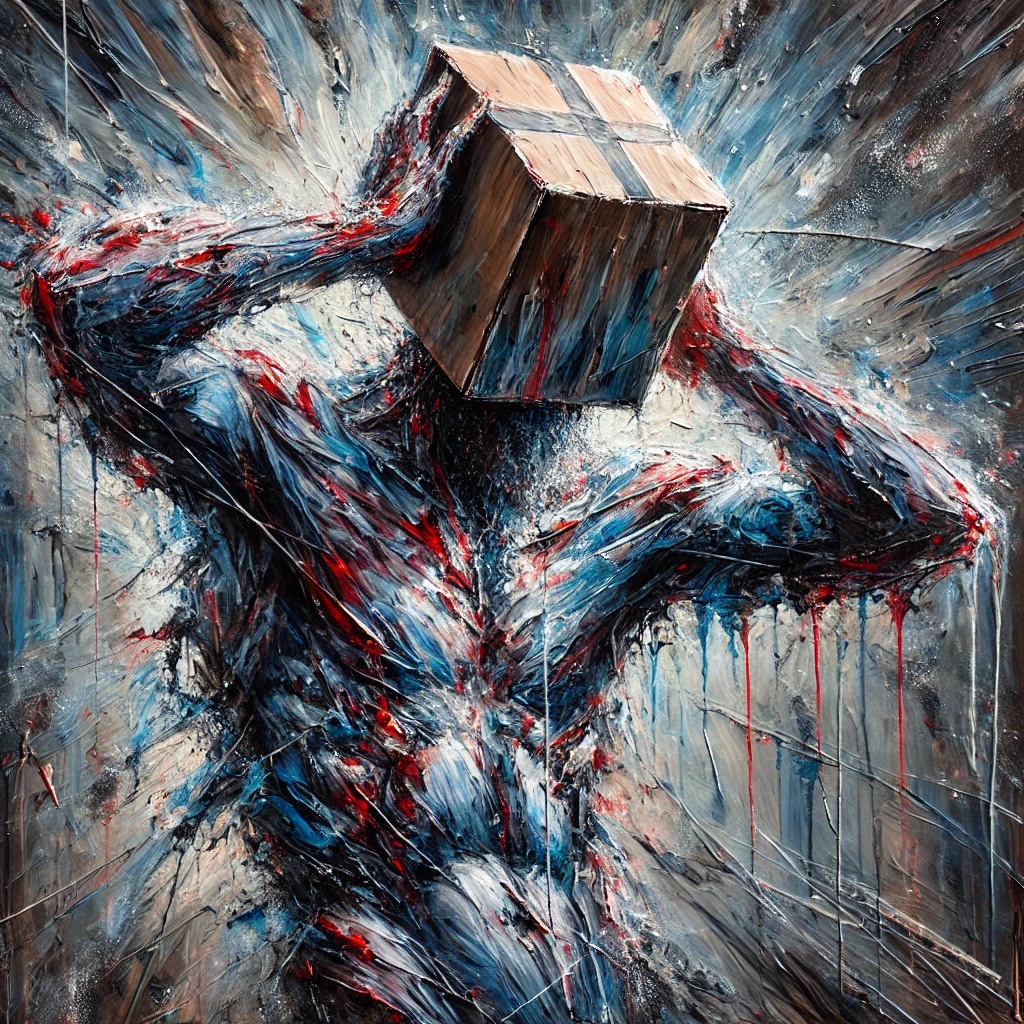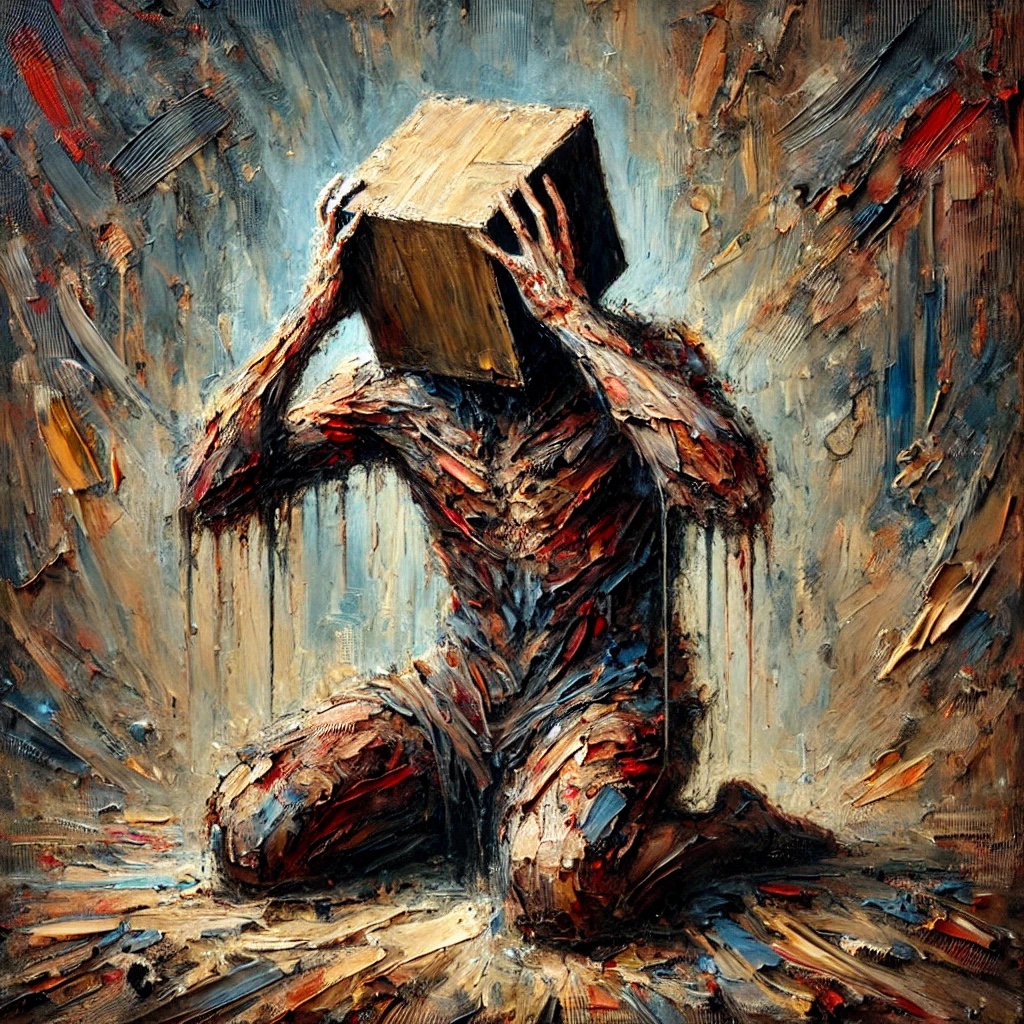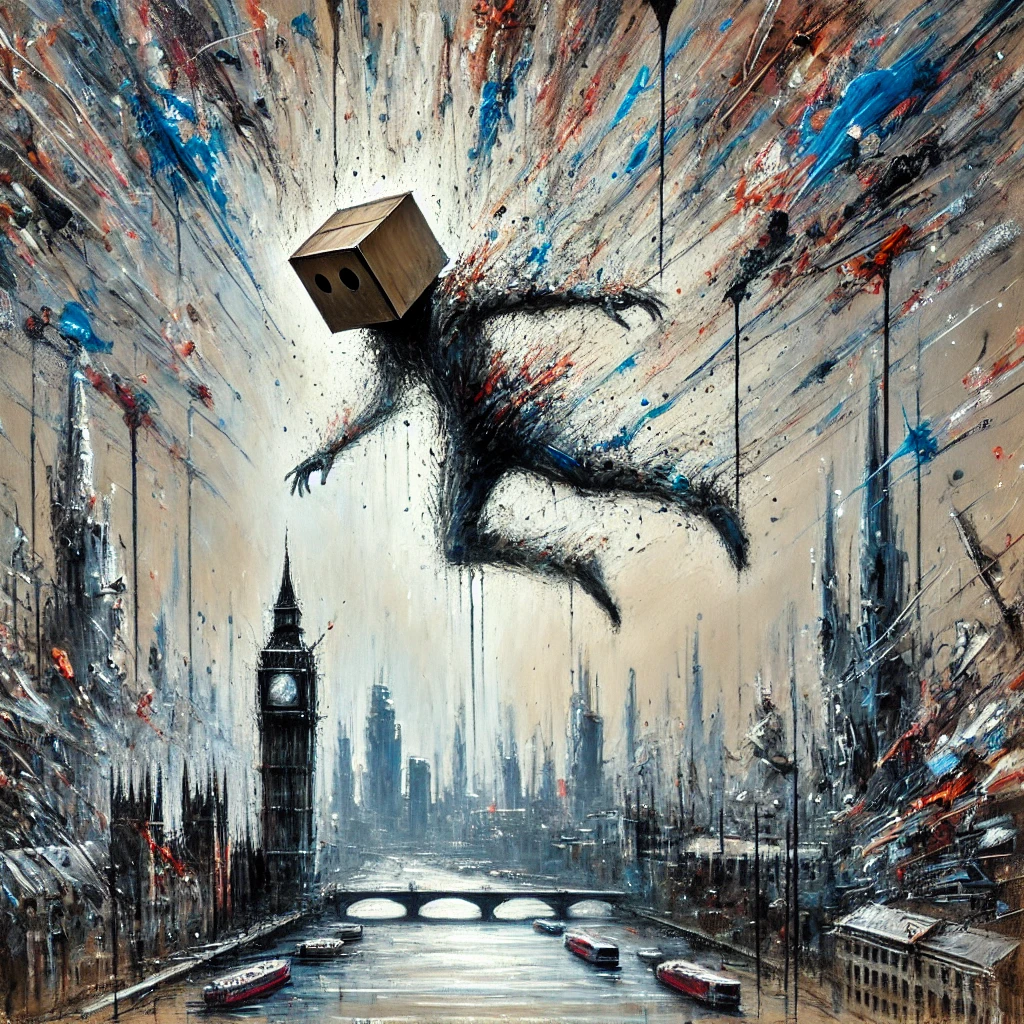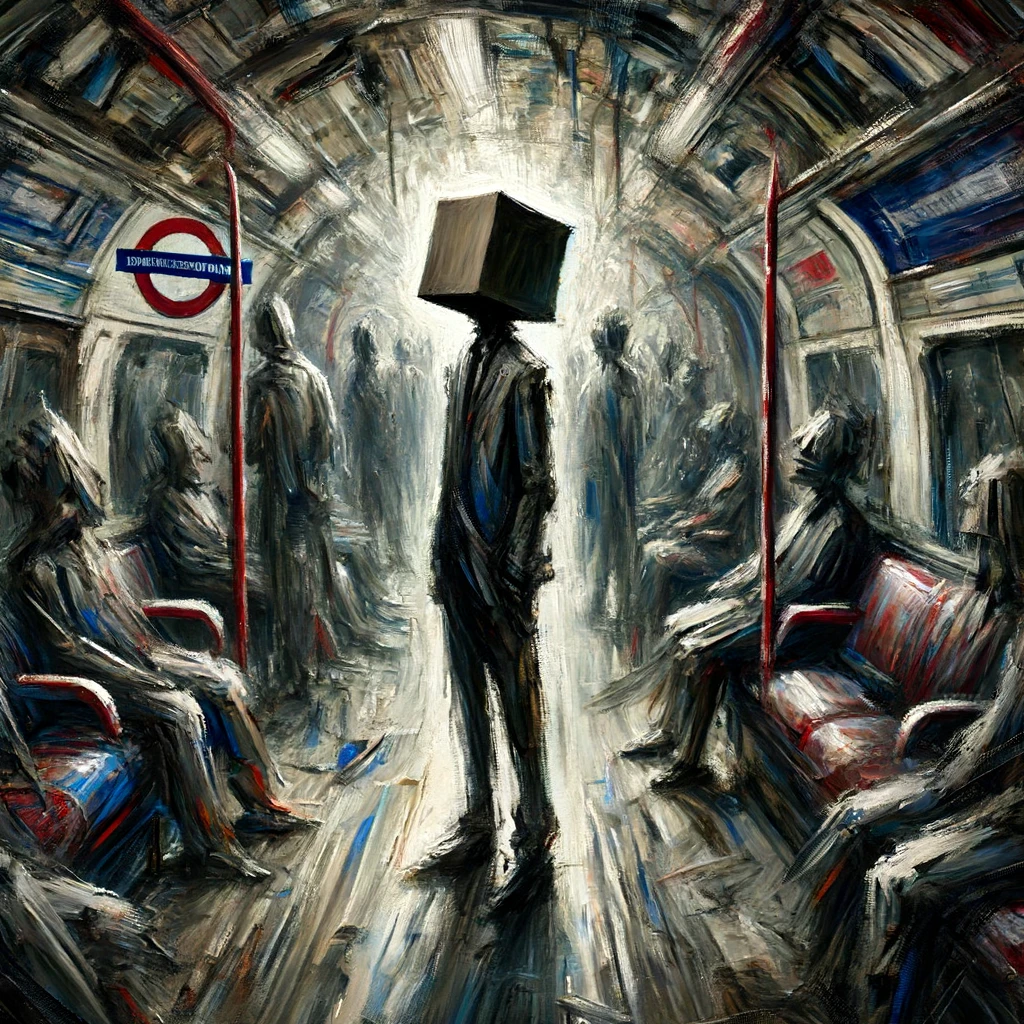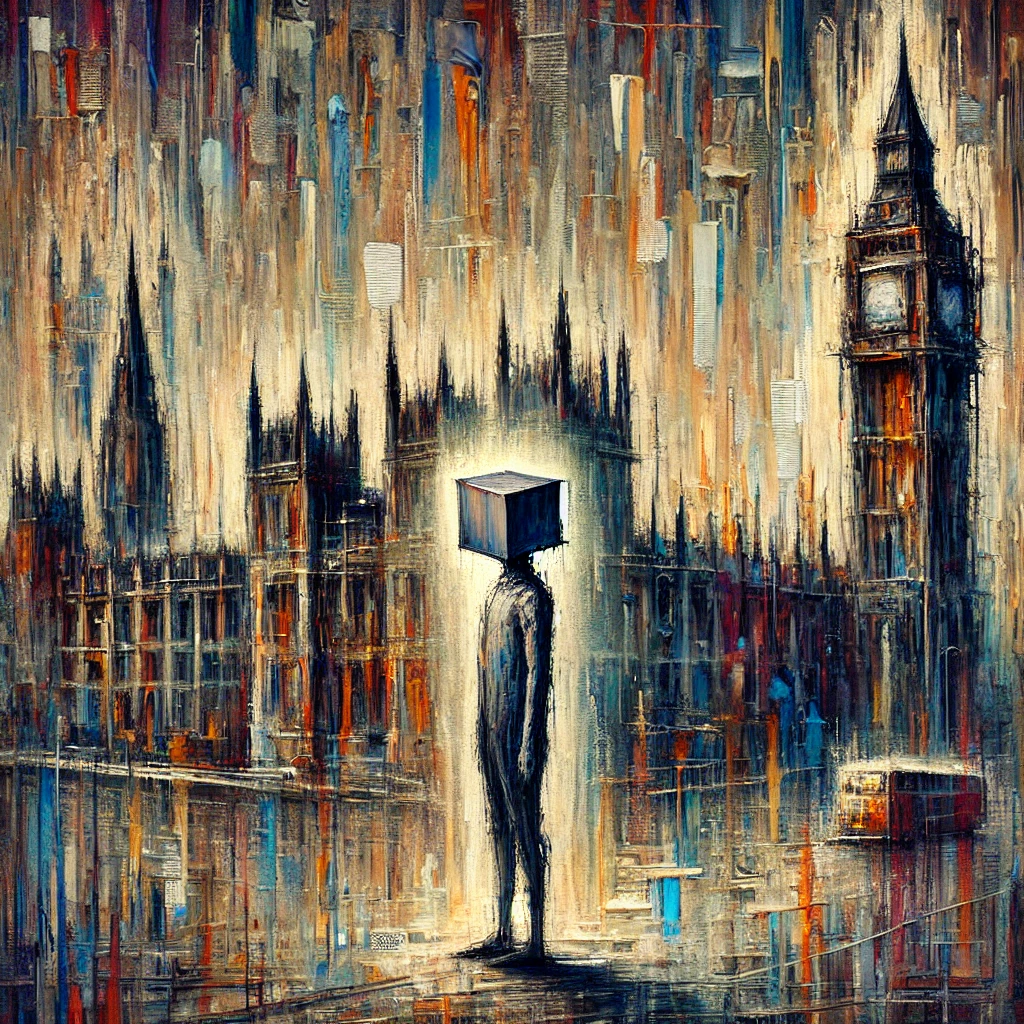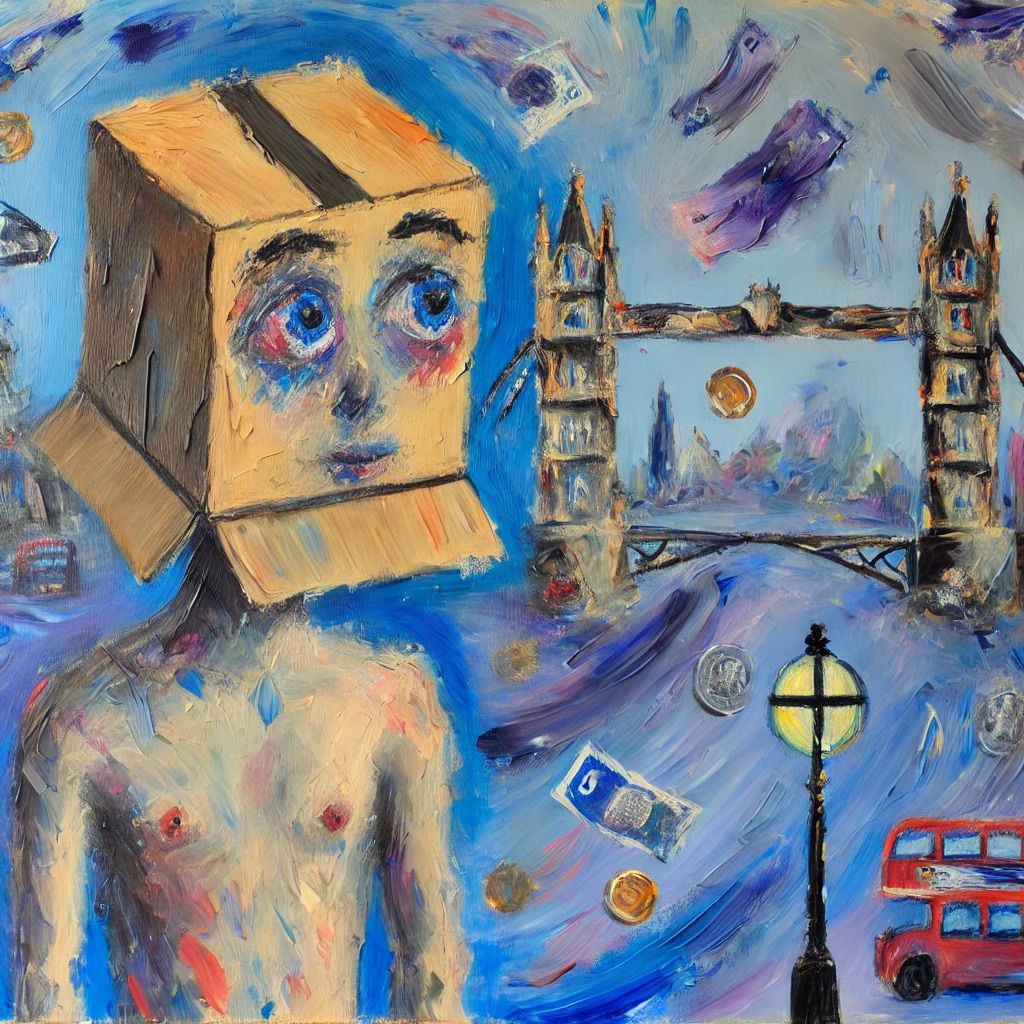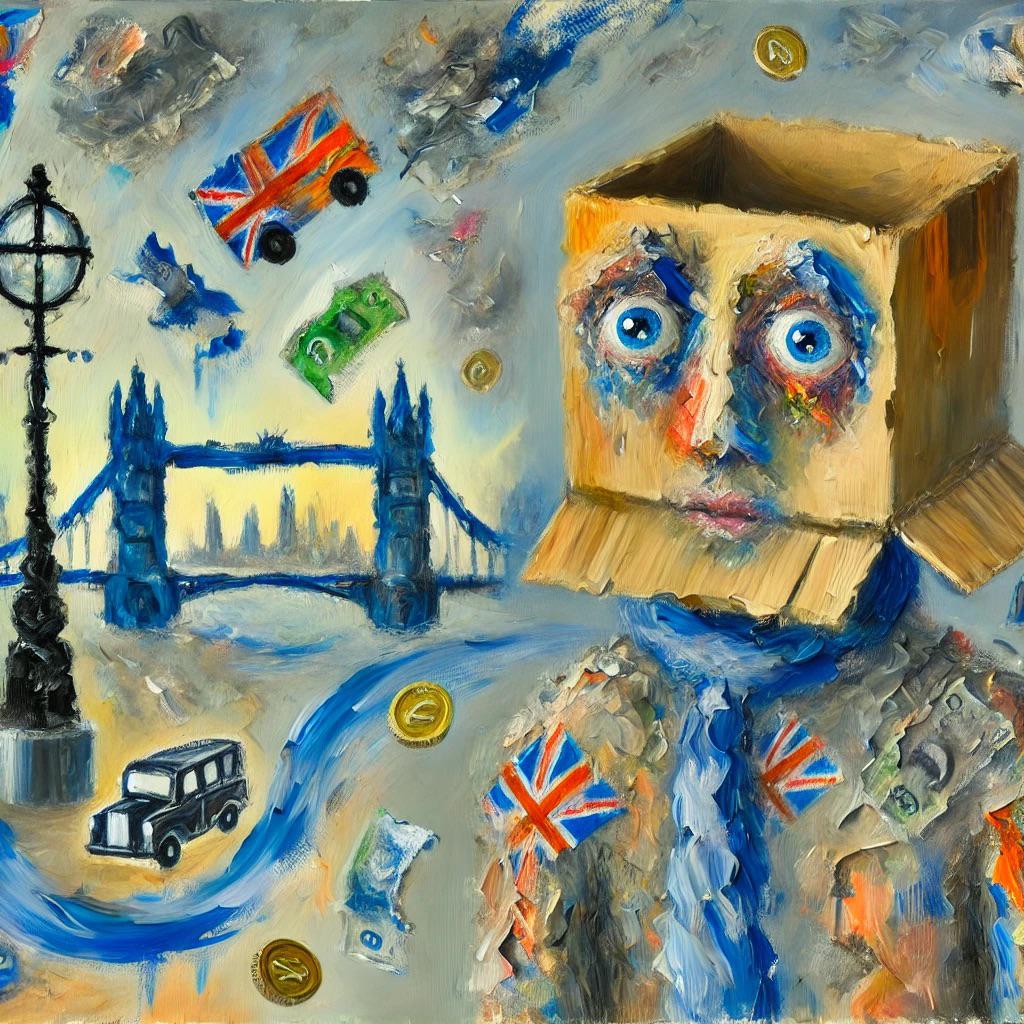Catalogue
What is the the Blockhead Movement?
Blockhead developed a deeply personal and transformative method of healing rooted in his vision of overcoming mental health struggles and the stigmas tied to emotional trauma. Diagnosed with PTSD, he conceptualized his head as a cardboard box—a vessel where memories, thoughts, and emotions are stored. This metaphor became a cornerstone of his coping mechanism and artistic expression.
Blockhead explained that PTSD is like a collection of bad memories trapped within the box, memories that latch onto moments of stress and spiral into a cascade of issues like anxiety and depression. To heal, he believed, one must confront these memories by “opening the box.” By facing the demons head-on, he argued, they could be released and discarded, leaving no negative remnants to fester or resurface.
This process, as Blockhead described, is a form of mental cleansing. Once the harmful memories are processed and released, the mind no longer has anything destructive to cling to. This alleviates the extended issues rooted in unresolved trauma, freeing the mind from the cycles of anxiety and depression. Through this vision, Blockhead not only sought to heal himself but offered a profound perspective on trauma and the path to recovery—one that invites others to confront, release, and ultimately lighten the burden carried within the “box” of the mind.
And now we share this philosophy and the artwork that results with you.

